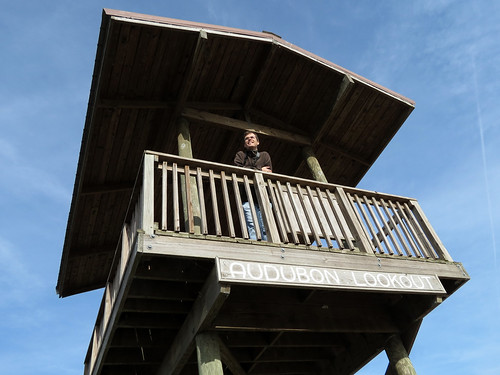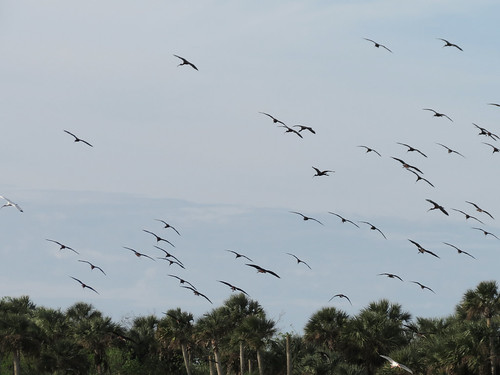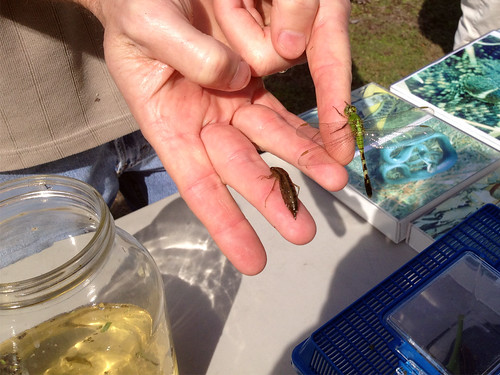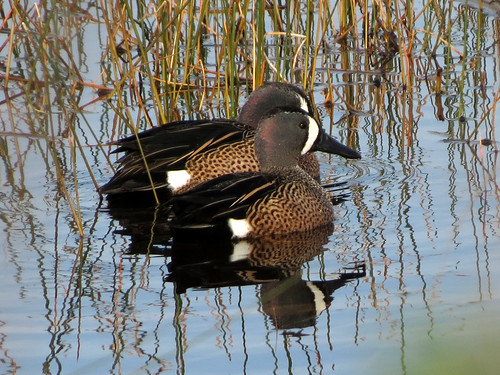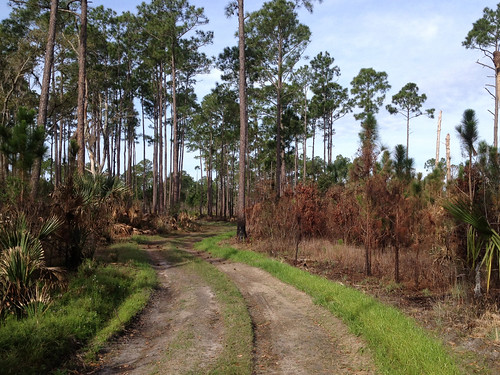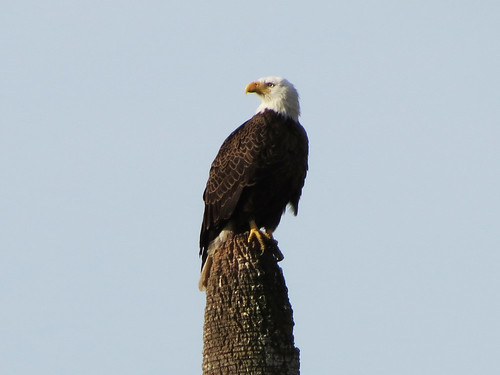I didn’t get to bird my local patch as much as I wanted to last month. I had a long-lasting head cold that kept me away for a while and then I was just really busy with work and other stuff (like a little birding getaway in the last week of February). In the end I tallied 7 complete checklists, but on two mornings I kept two lists so I only visited for birding a total of five times (plus a couple of quick bike-throughs on Spring-to-spring trail runs to Lake Monroe Park).
I tallied a total of 60 species for the month, with 10 new year birds (bold were new to my all-time Gemini Springs list) Green-winged Teal, Northern Harrier, Red-tailed Hawk, Killdeer, Caspian Tern, Yellow-bellied Sapsucker, Cedar Waxwing, Northern Parula, Yellow-throated Warbler, and Painted Bunting. The complete list of 60 species is at the end of this post.

Tricolored Heron; February 4 2012
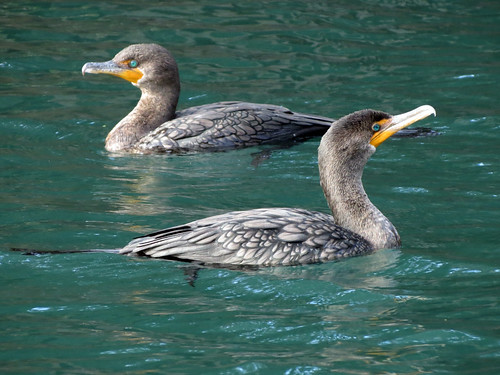
Double-crested Cormorants; February 4 2012

White Ibis; February 4 2012
Arthur and I joined Seminole Audubon on their club walk at Gemini Springs on February 18th. They seemed like a fun group so I hope we’ll be able to bird with them again some time. Since they started after 8:30AM this was one of the days I kept two lists – Arthur and I birded the park a bit before the official walk began.
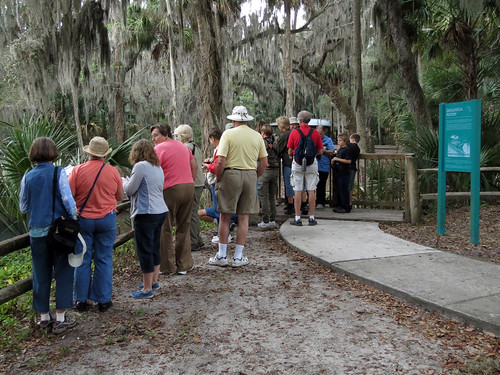
Birders from Seminole Audubon looking at one of the springs; February 18 2012
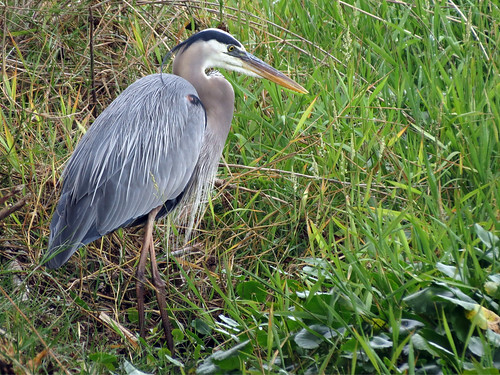
Great Blue Heron; February 18 2012
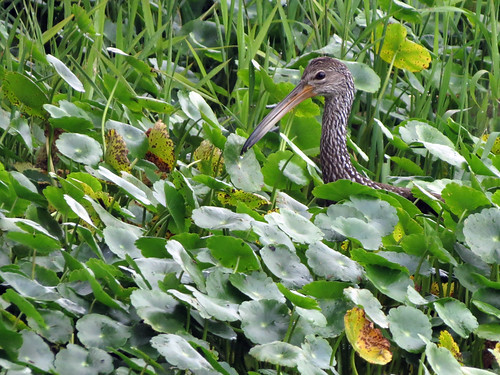
Limkpin; February 18 2012
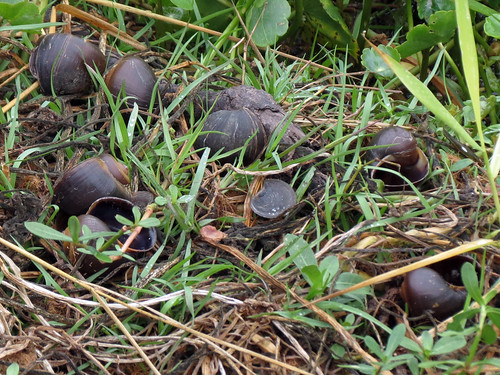
Limkpin leavings (apple snail shells); February 18 2012
I had been asked to lead a home school group on a birding walk on February 21st. Our walk was to begin at 9AM so this was the other day where I recorded two lists. Unfortunately our group was not as large as expected, but Arthur and I enjoyed birding Gemini Springs with a young mother and her two boys. The youngsters blew us away with their bird (and fish!) knowledge. It was a pleasure to bird Gemini Springs with kids. 🙂

Gemini Springs; February 21 2012
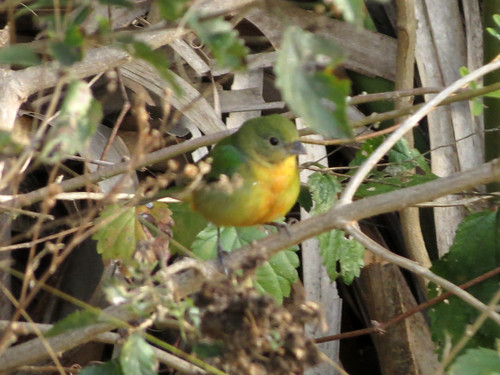
Female Painted Bunting; February 21 2012
February bird list, Gemini Springs
Blue-winged Teal – Anas discors
Green-winged Teal – Anas crecca
Pied-billed Grebe – Podilymbus podiceps
Wood Stork – Mycteria americana
Double-crested Cormorant – Phalacrocorax auritus
Anhinga – Anhinga anhinga
American Bittern – Botaurus lentiginosus
Great Blue Heron – Ardea herodias
Great Egret – Ardea alba
Snowy Egret – Egretta thula
Little Blue Heron – Egretta caerulea
Tricolored Heron – Egretta tricolor
Cattle Egret – Bubulcus ibis
White Ibis – Eudocimus albus
Glossy Ibis – Plegadis falcinellus
Black Vulture – Coragyps atratus
Turkey Vulture – Cathartes aura
Osprey – Pandion haliaetus
Bald Eagle – Haliaeetus leucocephalus
Northern Harrier – Circus cyaneus
Red-shouldered Hawk – Buteo lineatus
Red-tailed Hawk – Buteo jamaicensis
Common Gallinule – Gallinula galeata
American Coot – Fulica americana
Limpkin – Aramus guarauna
Sandhill Crane – Grus canadensis
Killdeer – Charadrius vociferus
Caspian Tern – Hydroprogne caspia
Forster’s Tern – Sterna forsteri
Mourning Dove – Zenaida macroura
Belted Kingfisher – Megaceryle alcyon
Red-bellied Woodpecker – Melanerpes carolinus
Yellow-bellied Sapsucker – Sphyrapicus varius
Downy Woodpecker – Picoides pubescens
Pileated Woodpecker – Dryocopus pileatus
Eastern Phoebe – Sayornis phoebe
White-eyed Vireo – Vireo griseus
Blue Jay – Cyanocitta cristata
Fish Crow – Corvus ossifragus
Tree Swallow – Tachycineta bicolor
Tufted Titmouse – Baeolophus bicolor
Carolina Wren – Thryothorus ludovicianus
Blue-gray Gnatcatcher – Polioptila caerulea
Ruby-crowned Kinglet – Regulus calendula
American Robin – Turdus migratorius
Gray Catbird – Dumetella carolinensis
Northern Mockingbird – Mimus polyglottos
Cedar Waxwing – Bombycilla cedrorum
Orange-crowned Warbler – Oreothlypis celata
Northern Parula – Setophaga americana
Palm Warbler – Setophaga palmarum
Pine Warbler – Setophaga pinus
Yellow-rumped Warbler – Setophaga coronata
Yellow-throated Warbler – Setophaga dominica
Chipping Sparrow – Spizella passerina
Savannah Sparrow – Passerculus sandwichensis
Northern Cardinal – Cardinalis cardinalis
Painted Bunting – Passerina ciris
Red-winged Blackbird – Agelaius phoeniceus
Boat-tailed Grackle – Quiscalus major
Share the birds, share the love!
